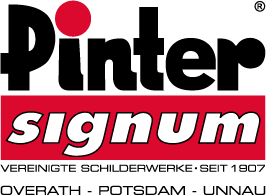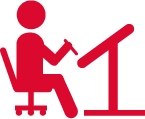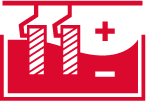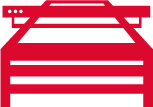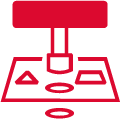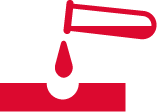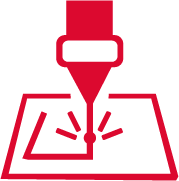Production
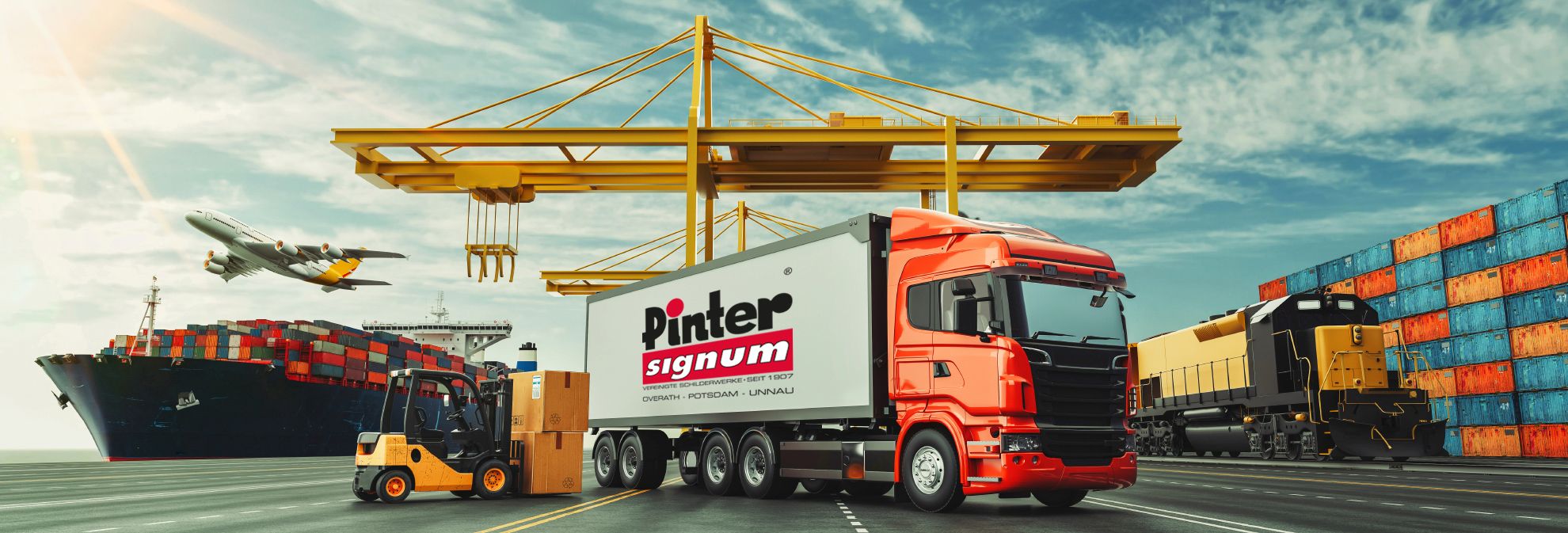
With our own graphics department, we can create proofs exactly to your specifications and realize your individual visions.
Anodizing refers to the process of causing aluminum to form an artificial protective layer through anodic oxidation. The top metal layer is transformed into an oxide, which protects the underlying layers from corrosion and abrasion. To ensure that the final surface is uniform and without cracks, the aluminum must be degreased and pickled before anodizing. This is followed by the actual anodizing process (electrolytic oxidation of aluminum), in which the metal, which is the anode in a solution (primarily sulfuric acid solution), forms an oxide layer of mineral porous nature by the application of current. Dyes can then be deposited in these open pores by a wide variety of printing processes. The material must then be compressed by steam or hot water (sealing). Due to the chemical reaction that takes place in the water or steam bath, the anodized pores swell up so that the color is trapped and sealed in the material.
Screen printing has an exceptionally wide range of applications for producing objects such as signs, front panels and labels in large runs. A squeegee (tool with a rubber lip) is used to press the desired printing ink onto the substrate through a fabric stretched on a frame, the so-called screen. At those points of the fabric where, according to the customer’s drawing, no color is to be imaged, the mesh openings of the screen are made impermeable to color in advance photomechanically by means of a correspondingly negatively imaged film. If you have more than one color, repeat the process again.
In contrast to screen printing, digital printing makes it much easier to reproduce a wide variety of color gradients economically and with near photographic fidelity, even in short runs. It involves transferring the printed image directly from a file or data stream from a computer to a press without using a static printing form, reducing and simplifying labor-intensive prepress processes. The print runs are adapted to the current demand (printing on demand) and a reprint with content corrections is possible at any time. Consecutive numbering or the like also pose no challenge in digital printing. The flexible and precise CMYK printhead and ink delivery system enables quick printhead changes for use with different ink types.
In the etching process, the marking of aluminum, brass or stainless steel is done by etching out the material using an etching liquid. Areas that are not to be recessed are previously protected from the etchant with a masking varnish (etch reserve). The lettering can be shown in a deepened (positive etching, deep etching) or raised (negative etching, high etching) form. Thus, after the plates have been processed in the etching bath or the etching machine, the residues of the etching solution must be removed by rinsing and neutralization processes. The recesses are then usually painted in color. However, this can also be omitted, so that the legibility results only from the contrast of blank base material and matt etched areas. Finally, only the etch residue is then removed by solvent (stripping) before the metal goes into mechanical processing.
An alternative to the etching process is CNC engraving, which, in contrast, can achieve greater depth. CNC engraving is a material-removing process in which the marking is engraved into the material, making it highly durable. The result is a visual and tactile effect that permanently enhances and individualizes signs. By means of CNC engraving, both rough and very fine lettering can be realized and signs can be provided with individual texts, shapes, logos or numbering. Through computer-controlled CNC engraving machines, the required markings can be implemented in detail, with the highest precision.
CNC punching consists in changing the shape of plates made of metals of different types (cutting process), such as steel or aluminum. In the past, punching was done by hand, while today the technique of punching sheet metal is adopted by automatically controlled CNC machines. The automatic punching machines or their tools consist of punches and dies with standard shapes or individual productions. These are set with the help of the controls, which determine the course of travel, pressure and other parameters. In CNC punching, the material (sheet metal) moves between the punching tools. To do this, it is captured at the edge and moved accordingly. The machine selects one of the tools located in a turret depending on the shape to be punched out.
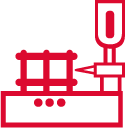
Plastic injection molding is the modern and economical alternative to aluminum, brass or bronze casting process with a relief-like surface. Large series or frequently recurring as well as constant requirements can be generated in almost any size. A colored plastic granulate (ABS, PVC, polycarbonate, polyster, etc.) is loaded into a barrel with a screw system, where it is finally melted and liquefied. After the plastic is melted, it is injected at high pressure through the feed channel into an individual mold, also called an injection mold. The mold is then cooled using cooling hoses and the plastic solidifies into the desired shape. The injection mold is then opened and the finished molded part is ejected. Finally, the remaining sprue is removed and the molded part can be metallized or printed as required using the hot stamping process.
The laser cutting separation process is performed on a laser cutting machine. This is equipped with a modern CNC control for automation. The high-energy laser beam ensures that the material melts, burns or vaporizes and the workpiece is completely penetrated. The laser beam is then moved along the desired contour with the help of the focusing optics and the guide unit and cuts through the workpiece cleanly and precisely. Parallel to the cutting process, a process gas is used to remove the ablated material from the resulting kerf while protecting the focusing optics from the vapors and spatter. Laser cutting allows the user to achieve tolerances of up to +/- 0.1 mm/m.
Laser marking describes the process of marking parts or workpieces using laser technology. A laser beam strikes the material, and its energy triggers a reaction that leaves a permanent mark. The speed, power and focus with which the laser beam hits the part depend on the material of the surface and result in different laser processes. Unlike laser printing, which uses a weak laser beam to control only the pigment application on the material to be printed, laser marking changes the surface of the material to be marked itself.
